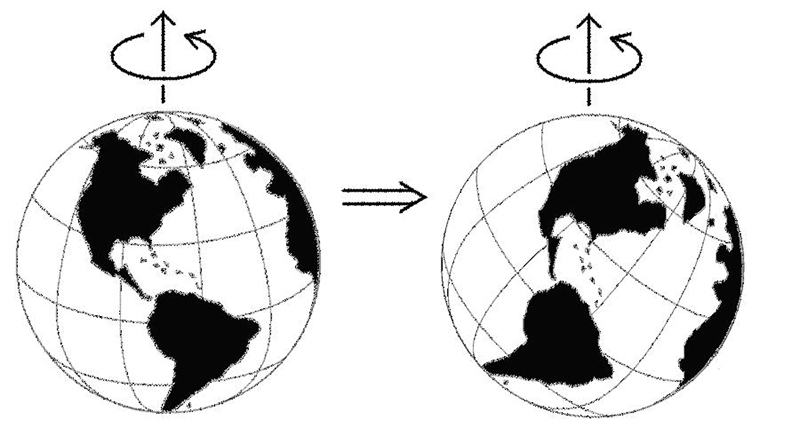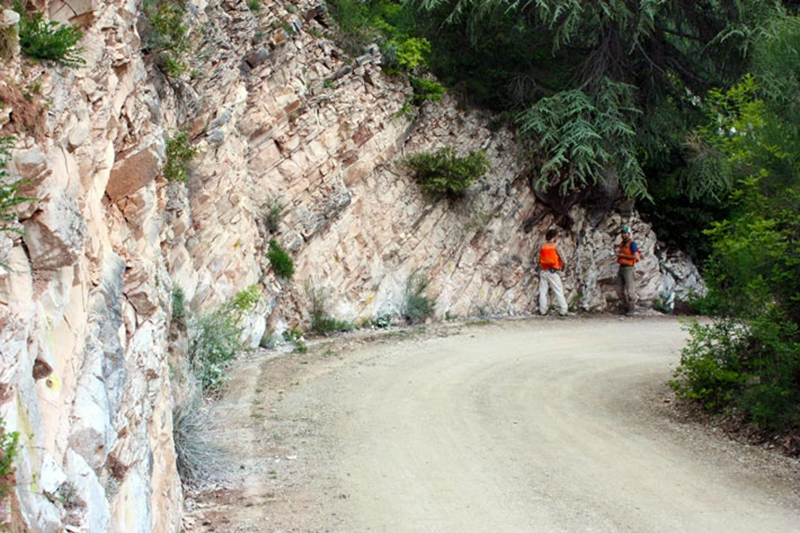We know that true polar wander (TPW) can occasionally tilt whole planets and moons relative to their axes, but it's not entirely clear just how often this has happened to Earth.
Now a new study presents evidence of one such tilting event that occurred around 84 million years ago – when dinosaurs still walked the Earth.
Researchers analyzed limestone samples from Italy, dating back to the Late Cretaceous period (100.5 to 65.5 million years ago), looking for evidence of shifts in the magnetic record that would point towards an occurrence of TPW.
Bacteria fossils trapped in the rock, forming chains of the mineral magnetite, offer some of the most convincing evidence yet of true polar wander in the Late Cretaceous – and it may help settle a scientific debate that's been going on for decades.
 How true polar wander looks. (Victor C. Tsai/Wikimedia Commons/Public Domain)
How true polar wander looks. (Victor C. Tsai/Wikimedia Commons/Public Domain)
"This observation represents the most recent large-scale TPW documented and challenges the notion that the spin axis has been largely stable over the past 100 million years," the researchers explain in their paper.
Earth is made up of a solid metal inner core and a liquid metal outer core, with a solid mantle and crust (the surface) moving slowly around on top of the liquid metal. Earth's magnetic field, generated by the outer core, is recorded in rocks like the ones studied here.
True polar wander is when the geographic poles shift substantially, so the outer wrapping of Earth tilts over. Nothing actually changes in terms of Earth's magnetic field, but the shifting rocks will record different paleomagnetic data as they move.
That data reveals the distance to the North and South geographic poles, enabling researchers to plot where these poles actually are. A fully vertical field means a rock was at the pole, while a fully horizontal field indicates it was at the equator.
"Imagine looking at Earth from space," says geologist Joe Kirschvink, from the Tokyo Institute of Technology in Japan. "True polar wander would look like the Earth tipping on its side, and what's actually happening is that the whole rocky shell of the planet – the solid mantle and crust – is rotating around the liquid outer core."
 Part of the extraction work. (Ross Mitchell)
Part of the extraction work. (Ross Mitchell)
According to the study, there was around a 12 degree tilt on Earth around 84 million years ago, which was corrected relatively quickly – within about 5 million years, the equivalent of a "cosmic yo-yo" in the words of the researchers.
What that means is that these rocks – and Italy itself – took a journey towards the equator before tipping back.
The team says that previous studies hinting that true polar wander didn't happen during the Late Cretaceous simply didn't gather enough data from the geological record – something that can't be said about the latest research.
"That is one reason why it is so refreshing to see this study with its abundant and beautiful paleomagnetic data," says geophysicist Richard Gordon, from Rice University in Houston, who wasn't involved in the study.
The research has been published in Nature Communications.
